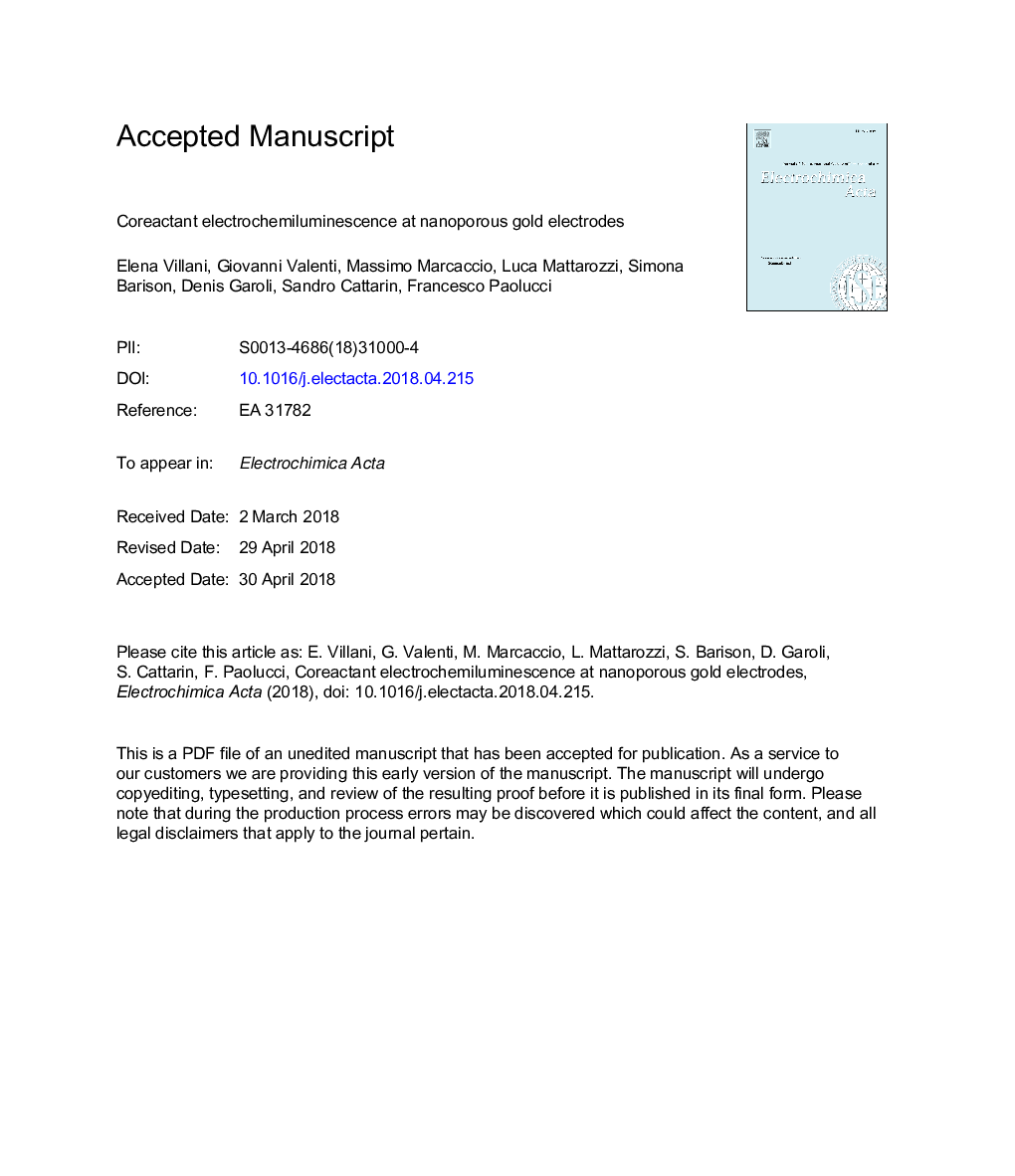| Article ID | Journal | Published Year | Pages | File Type |
|---|---|---|---|---|
| 6602761 | Electrochimica Acta | 2018 | 29 Pages |
Abstract
The electrochemiluminescence (ECL) performances were comparatively investigated at flat and nanoporous gold (NPG) electrodes of different thicknesses (120 and 200â¯nm) and roughness factors (fr). The phenomena were studied using either tripropylamine (TPrA) or peroxydisulfate (S2O82â) as sacrificial coreactant and Ruthenium (II)-tris(2,2â²-bipyridine) as emitting species. The experiments performed using TPrA showed, at first glance, a linear dependence of the ECL emission with respect to the effective surface area of the NPG electrodes. However, ECL signals were not stable in the measuring conditions, presumably due to amine absorption on the metal surface, leading to electrode corrosion and modification of the surface morphology. The experiments made using peroxydisulfate as coreactant provided conversely a stable ECL response, about proportional to the effective electrode surface area, in the considered range of thicknesses.
Related Topics
Physical Sciences and Engineering
Chemical Engineering
Chemical Engineering (General)
Authors
Elena Villani, Giovanni Valenti, Massimo Marcaccio, Luca Mattarozzi, Simona Barison, Denis Garoli, Sandro Cattarin, Francesco Paolucci,
